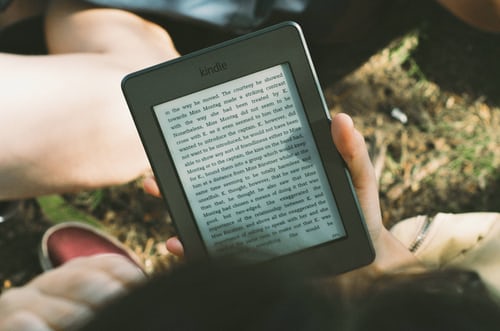For literature appreciators who want to pursue a sustainable lifestyle, it is important to consider the environmental impact of producing and distributing our books. Did you know that a single book generates about 7.5 kg of carbon dioxide equivalents? This results to be the value of all its greenhouse gas emissions expressed in terms of the impact of carbon dioxide. In a previous article, we covered the topic of paper waste and its impact on the planet. The preservation of trees and the balance of the Earth’s ecosystem they provide is an issue that we hold dear. For this reason, we present 5 easy solutions for you to read sustainably!
1. Buy & Sell Second-Hand Books
The first option for reading sustainably is the secondhand book. It becomes representative of a tenacious and vibrant cultural heritage that needs to continue existing. For those among us who cannot replace the tactile pleasure of printed paper under our fingers, the secondhand book market is definitely among the most environmentally friendly solutions. This embraces a wide range of low-budget, fun, and eco-friendly options! F. i., Re-read, a Spanish chain-brand project, aims at increasing recycling by buying and selling secondhand books. You can sell your books for 0.20 euros each, and buy 1 book for 3 euros; 2 for 5 euros, and 5 for 10 euros. This will help reduce your impact on paper demand and preserve our forests. Quite a plan, uh?

2. Get yourself a Library Card
Our dear old library, why do we always forget about it? Yet it is a great way to expand our culture while taking care of the planet. Just as with secondhand books, we can also make our reading sustainable by borrowing books from the community library. It is important to note that knowledge is designed to be shared. In this sense, a library seems to be a plastic representation. Reading at the library can be an opportunity for people to meet and interact. And if you feel that you would be rowdy in this kind of environment, you can always borrow the book and read it from the comfort of your home. But this is not all! Many library cards include discounts and offers, such as entrance fees to concerts; art exhibitions, and cinemas.
3. Make it Digital with an E-Book
If you do not care that much about printed versions and choose comfort over tradition, the e-book might be the sustainable solution that fits you best. You will contribute not only to preserving our forests, but also to reducing the emission of chemicals; CO2, and fuel consumption produced during production and transportation. Book distribution consists of a long series of shipments that translate into a significant carbon footprint. From printing to packaging; from the sorting center to the local warehouse or store, and sometimes, even from there to our doorstep. The e-book requires one-time transportation and will allow you to download as many books as you want, gradually enriching your pocket library. Sustainability is one e-book away!

4. Give a Chance to Audiobooks
Did you know that the Homeric poems, a masterpiece of archaic Greek literature, have been transmitted orally for centuries before being transcribed? This allowed for greater dissemination of knowledge since literacy was a privilege for few at the time. The ancient cantors interpreted the story in verse of the deeds of great heroes and capricious gods by playing ditties. It seems that in Ancient Greece they were knowledgeable about environmental sustainability; among many other things. Nowadays, it has become more of a method of entertainment, but it still carries some of that ancient magic. Many audiobooks imitate the ancient cantors by accompanying the reading with ambient music. Among the easy solutions to read more sustainably, the audiobook turns out to be the most creative and intriguing one. Imagine the pleasure of immersing yourself in a story, as you stroll placidly through the park or enjoy the sight of a sunset…
5. Book Swap
Lastly, trading your books can also be a fun and super cheap way to read sustainably. Instead of reselling your book for a fraction of the cost, participating in a book swap will allow your old book to find a reader, and in return, you will receive a new used book to read. There are book swap websites that facilitate the book swapping process. Most of them are free, and some even pay for the postage needed to exchange books. Some of the most popular include PaperBack Swap and BookCrossing, but there are plenty of other options out there for you to discover! F.i., you can swap other items in exchange for books. Sites like TradeMade and FreeCycle handle this type of exchange and work on an international level. What are you waiting for? Give your reading a sustainable twist!






